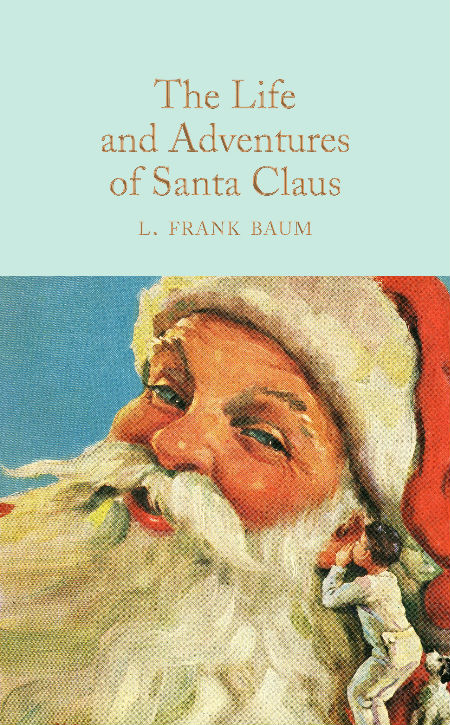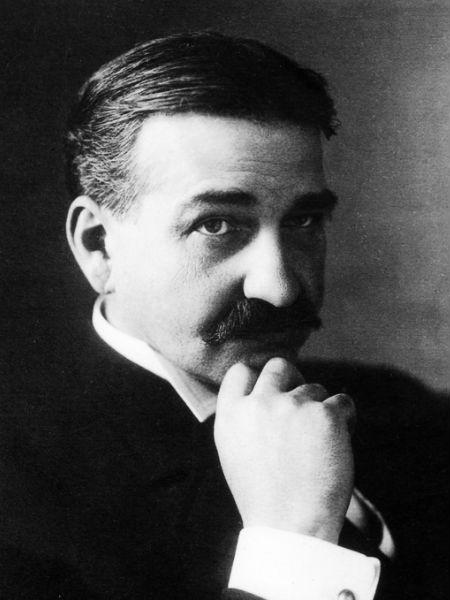This post was originally published on 12 December 2018.
There are some figures that loom so large in the public consciousness that it’s easy to feel like you know, or you can imagine, pretty much everything about them.
Santa Claus is one of those figures.
We owe our collective modern idea of Santa Claus to the Greeks (Saint Nicholas, a fourth-century Greek bishop), the British (Father Christmas) and the Dutch (Sinterklaas) and his jolly, red-and-white suited image to Coca-Cola who conjured him up for, naturally enough a marketing campaign.
We know he has a sleigh, eight reindeer, gives toys to children all around the world, has elves working for him at the North Pole, an equally jolly wife and penchant for saying “Ho Ho Ho”.
But how did these aspects of Santa Claus, and many more besides come to be?
L. Frank Baum, who gave us the classic wonder and morality of The Wizard of Oz, was one very imaginative man who thought he knew all about the iconic figure of festivity, spinning a tale in The Life and Adventures of Santa Claus which adheres to generally-accepted ideas about the eternal gift-giver but comes up with magically-real reasons for their existence.
Published in 1902, the book runs to only 129 pages but it is packed full of beautiful, lilting imagery, uplifting pre-World War 1 ideas of the goodness of children and adults when confronted with unconditioned love and kindness and a belief that the world is underpinned by a pagan supernatural apparatus that sustains and controls all life.
It is a beguiling idea, not least because the way Baum tells it, we owe our current obsession with Santa Claus to the forest nymphs, sprites, gnomes and water demons of the world, immortal creatures who many centuries back took in an abandoned baby who grew up to become the man we know and love today.
These creatures, particularly the Knooks, can be contrary and short-tempered but they are, usually, reasonably self-sacrificing and committed to a virtuous outlook on life.
In fact, much of the book, if not all of it, is predicated on a very idealistic view of the world, one infused as much by stylised paganism as it is by Christian ideas of giving, of man’s ascendancy over creation – near the end of the book, Ak, the Master Woodsman of the World says he’s fine with people cutting down the forests since they exist primarily for man’s use – and the idea that a life well-lived is one given over in service to others.
In some ways this idealised view is a balm to the modern soul, one afflicted by a raft of public figures who seem to view the world and humanity as objects and resources to be plundered for personal gain.
The idea that Santa Claus, inspired by his upbringing as the son of water nymph Necile, who loved him as dearly and selflessly as any human mother, would devote his life to making toys and bringing joy to others with no thought of return is delightful.
Granted, it’s accompanied by some odd ideas such as it being perfectly fine to break into peoples’ homes via their chimney – they are so excited to get the toys that no one seems too troubled by this – and children happily spending the night with Santa Claus but they are over-thinking lenses I suspect on a book that is at heart a celebration of the idea that giving is such a virtuous act that it inspires all kinds of other selfless gestures.
Certainly, so good and kind, almost to a bewildering degree, is Santa Claus that he all but compels the first two deer in his service, Flossie and Glossie – sorry everyone no Comet or Blitzen here – to pull his sleigh (they are giddy at the idea of servitude in pursuit of a noble cause), convinces the Rhyls (who look after flowering plants) and the Knooks who guard the beasts of the world to supply with him discarded wood and natural dyes to make the wooden toys as beautiful as possible and draws together an army to dispatch an evil race known as the Awgwas who perish in what is essentially a brutal genocidal war.
There is, for a book about so lovely a figure, some pretty intense dark stuff going on and you soon realise that the immortals might be driven by great virtue and love but that they can, when required, be vengeful and utterly without mercy.
But The Life and Adventures of Santa Claus is in essence a feat of magical imagination, a distinctly-original and highly-captivating origin story for Santa Claus which underpins his yearly circuit of gift-giving around the world with a profoundly-ingrained moral philosophy that celebrates not commercialism but altruistic giving and the dispensing of joy.
Some of the language is a little twee for modern standards, and a number of the ideas oddly old-fashioned but The Life and Adventures of Santa Claus is a singularly-clever take on a figure we think we know well that imbues him with the kind of selfless benevolence that confounds the more modern commercial aspects of Christmas and reminds us that perhaps at its core, the season is a celebration of what is good and not selfish about people, and in this day and age, that is something worth holding very close.

